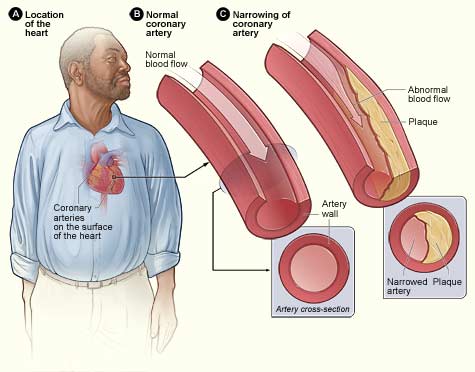
Heart disease is one of the leading causes of death worldwide
Coronary arteries are the most frequent site of damage from atherosclerosis (hardening of the arteries) and other cardiovascular disease.
There are two types of coronary artery disease: hardening of the arteries and clumping. (A) The location of the artery in the heart; (B) the front surface of the artery, including the main arterial blood vessels, and the major blood vessel branches. The arteries, or coronary arteries, are responsible for carrying blood to the various parts of the body. When the flow of blood is affected, the major organ(s) affected are the lungs, the brain, the kidneys, the liver, and the spleen.
Atherosclerosis is the name given to a group of diseases that have many common characteristics, such as a buildup of fatty deposits on the arterial wall (arteriosclerosis), the thickening of the arterial wall (atherosclerosis), or blockage of a blood vessel (ischemia). This buildup of plaque in the arterial walls is known as plaques. Plaques are actually aggregates of fat cells deposited together to form blood clots.
Plaque buildup is due to the cholesterol-rich blood and fatty deposits accumulating together. As the buildup progresses, it results in hardening of arteries and eventual thrombosis or obstruction of blood flow through the arteries. If the plaques are not treated, the blood supply to the arteries is disrupted and permanent damage may occur. Once the arteries are damaged, they cannot produce sufficient blood for normal functions anymore, and this can lead to death.
Heart attack and stroke, the two leading causes of death from coronary artery disease, can be brought about by hardening of the arteries or clumping. If either of these are left untreated, it can lead to fatal heart attacks and strokes.
Prevention of coronary artery disease begins with the identification of its early signs and symptoms. If these symptoms are ignored or left untreated, it can result in irreversible damage to the heart.

Heart failure is the primary cause of coronary artery disease and the third leading cause of death worldwide
The most common symptoms include chest pain, difficulty in breathing, and dizziness or lightheadedness. If left untreated, it may cause a heart attack. If left untreated, it may lead to a heart attack or stroke.
If left untreated coronary artery damage can progress over time. Eventually, there will be a complete blockage of one or more arteries, resulting in a heart attack or stroke. Although coronary heart attack and stroke are both associated with coronary artery disease, the two are different.
As mentioned, one common symptom of coronary artery disease is the onset of sudden cardiac arrest. A heart attack or stroke can occur even without warning, but a person experiencing any of the above symptoms should consult their doctor immediately.
One major concern of people who have coronary heart disease is that heart attack or stroke can be a symptom of other serious ailments. For instance, some cases of heart attack can mimic strokes or heart attacks caused by hypertension. However, if left untreated, heart attacks can lead to death. If the condition is not detected at an early stage, it can result in irreversible heart damage.
It is very important to monitor the cholesterol levels in the body. High cholesterol levels are a leading cause of cardiovascular disease, so it is advisable to avoid foods rich in saturated fats and high in cholesterol.
For people who have a history of heart attacks or strokes, they need to control cholesterol levels in their bodies as much as possible to prevent a recurrence. Some of the common foods that can be harmful are fish, poultry, eggs, red meat, nuts, and dairy products.
In order to reduce the risk of heart disease, controlling high cholesterol is very important. For example, saturated fats in red meats, eggs, and dairy products can cause an increase in cholesterol levels. To control this, individuals who consume high amounts of meat, poultry, and eggs should limit or remove them from the diet. Instead, the patient can choose low-fat dairy products, including milk and low-fat yogurt.